Richard Sheaf headed to London’s Cartoon Museum for a fascinating talk by artist and comics archivist David Roach, author of the recently published A Very British Affair, on British girls comics…
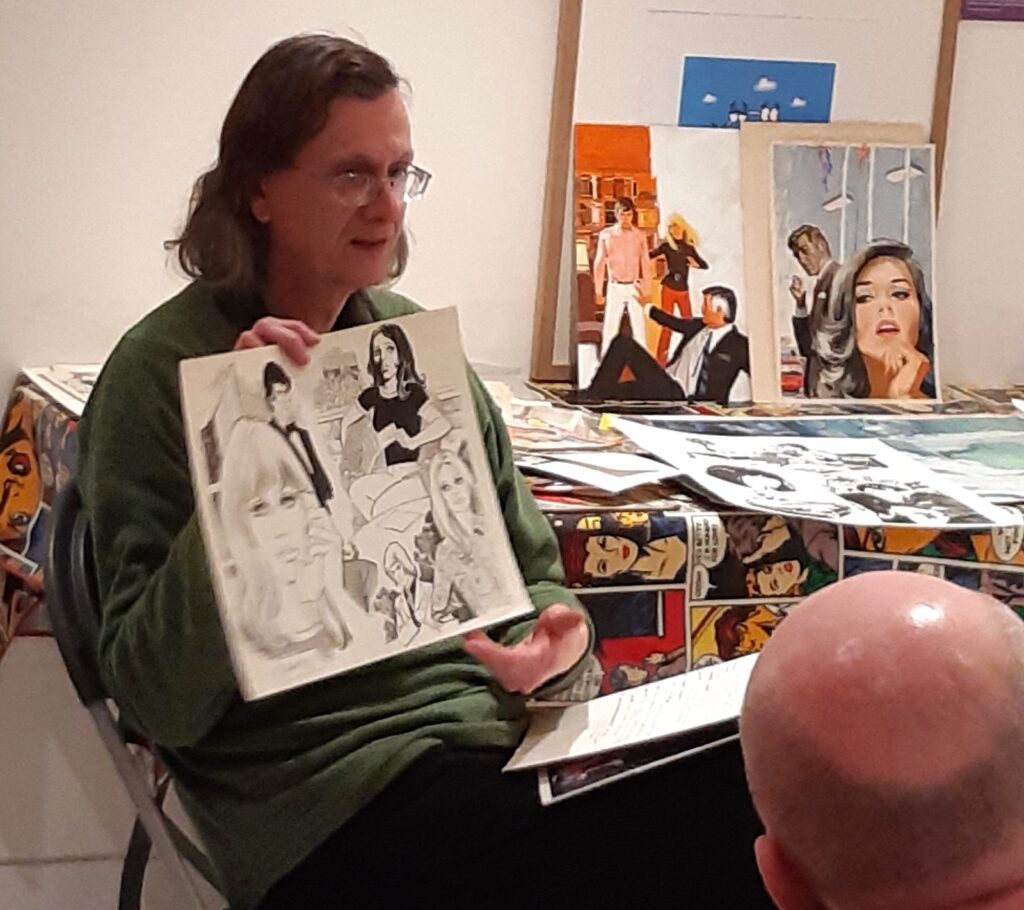
The latest of the “Thursday Night Lates” talks at the Cartoon Museum saw artist and author David Roach, talking all about his latest book, A Very British Affair – the best of classic romance comics. David talked for an hour, with only the occasional interjection from the host, Rebellion’s Michael Molcher, regaling his audience with his knowledge of, and love for this much overlooked part of British comics history. He illuminated his talk with examples of original art from many of the artists featured in the book – the art mainly having been rescued from a publishers cupboard by artist Jim Baikie many years ago!
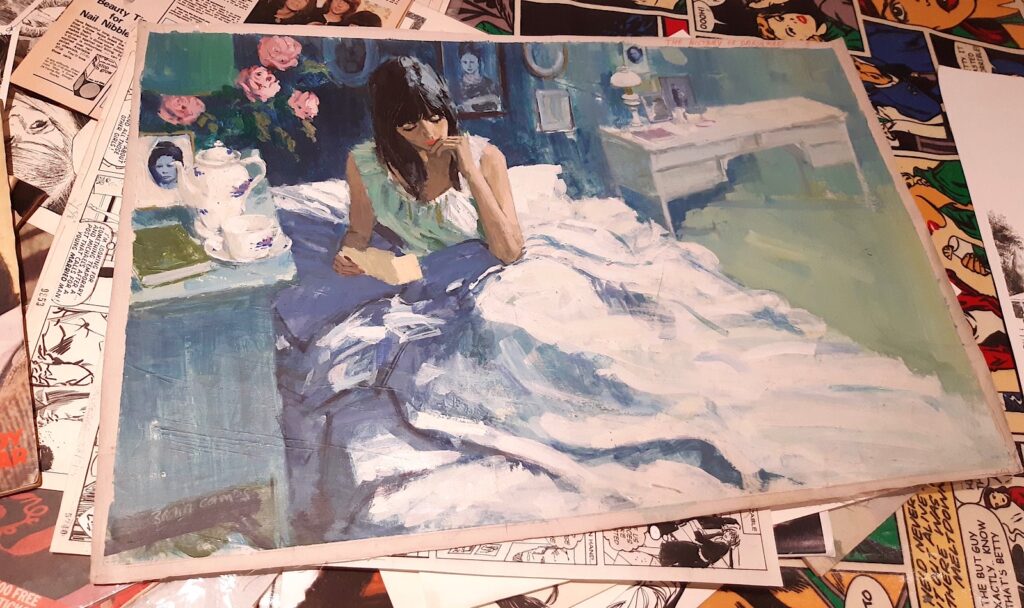
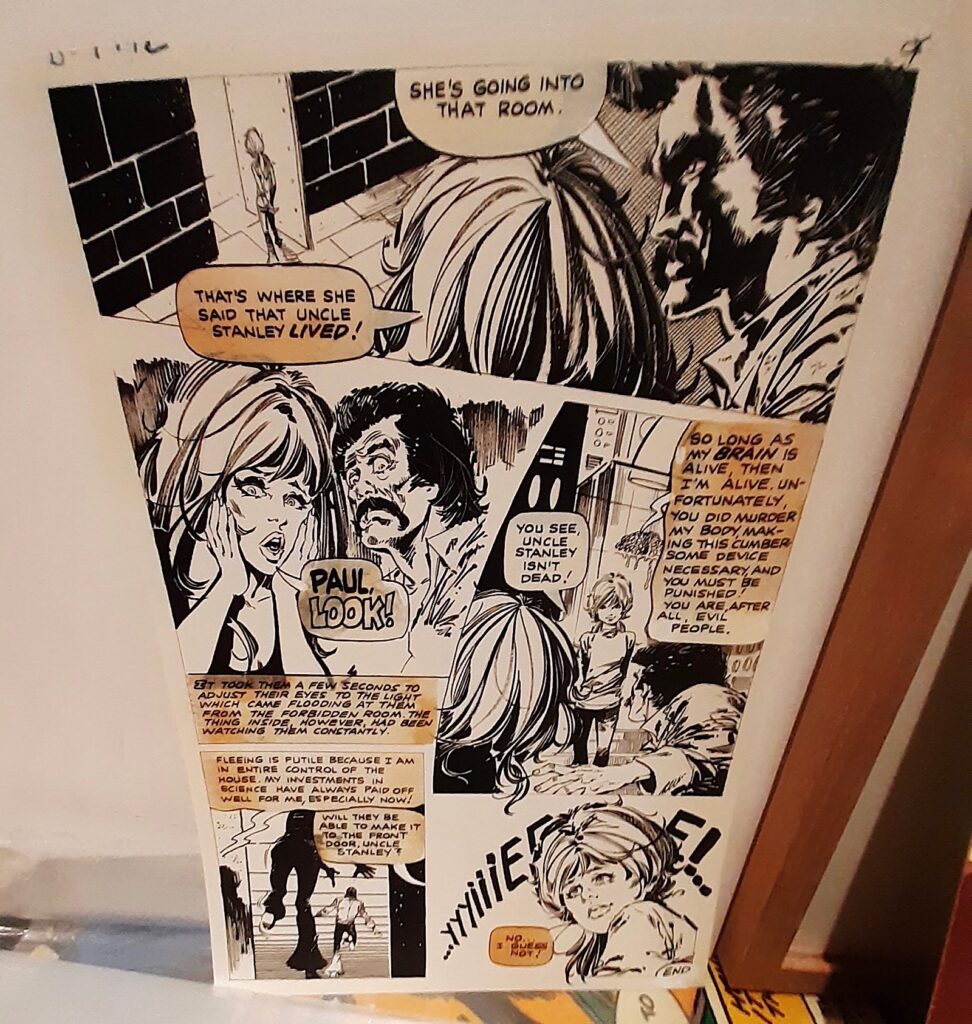


David started by comparing the clear, known history of US romance comics with the more uncertain, and much less well recorded, beginnings of romance comics in this country. He gave the example of Valentine Picture Story Library #1, first published by Fleetway in 1960. Although David had seen an advertising flyer for this title, with just the cover pictured, it then took him another 20 years to actually see a physical copy!
As it turned out, Valentine Picture Story Library, which was the size of Commando, wasn’t actually a comic. Instead, it was filled with illustrated text stories. It ran for just 22 issues and, while there’s a complete set in the Fleetway archive, this title has to all intents and purposes disappeared.
Romance comics first appeared in Italy, with the title Grand Hotel. Here in the UK the first title is reckoned to be Glamour, a story paper which, at some point in 1950, saw short romance strips creep into its pages. While the artist supplying these strips Leslie Otway, is known the reason why these strips started to appear in Glamour is unknown.
Then, in 1952, Fleetway published Love Story Library, followed by True Life Library, before finally we arrive at Marilyn in 1955 – the first weekly romance comic for girls. It had taken five years to get from Glamour to Marilyn. By contrast, in the US it took about six months for the romance comics market to become established.
The second romance comic was Mirabelle, launched in 1956 by Pearson, a title that contained a mixture of beautiful, fully painted artwork – David pointing out all the stories seemed to feature Sophia Loren as the heroine of the piece! – and photostrips. Mirabelle wasn’t for kids though: it was targeted squarely at adults. It wasn’t until Valentine was launched, in January 1957, again by Fleetway, that there was a title aimed at a slightly younger audience.
Gradually, from 1955 to the early 1960s, the titles came to be aimed at teenage girls and young women who were about to get married.

David highlighted some of the writers who wrote for these titles, often uncredited and often working for decades, including well-known names like Peter O’Donnell, best known as the creator of Modesty Blaise, and westerns author Jim Edgar. David was able to show examples of work by well-known illustrators like Gerry Haylock and Harry Lindfield, who he rated as the best of the British artists to draw for the romance comics. Their ability to draw pretty girls, unsurprisingly, he considered an essential skill!
For Mirabelle, David showed some examples of Shirley Bellwood’s work, who later became synonymous for her work for the 1970s comic, Misty, and highlighted Frank Langford as being the first Brit to draw for Mirabelle – a comic full of stories seemingly set on the Italian Riviera.

As David explained it, publishers were, at this time, finding it quite hard to find romance artists. A lot of British artists had an illustration training, which turned out to be a bit “old school”, as far as readers were concerned. The more glamorous, more dynamic style that these new readers were looking for was provided by European art agencies.
Initially, the artists were predominantly Italian, but as time wore on and the demand for the romance comics grew, there simply weren’t enough Italian artists to provide all the pages needed. It was at this point that Spanish artists started to become involved, such as Carlos Freixas, Miguel Quesada Ramos, Jesús Blasco, Jordi Longaron and Josep Maria Miralles. There are plenty more, too, David, and his book, highlight many lesser-known names.
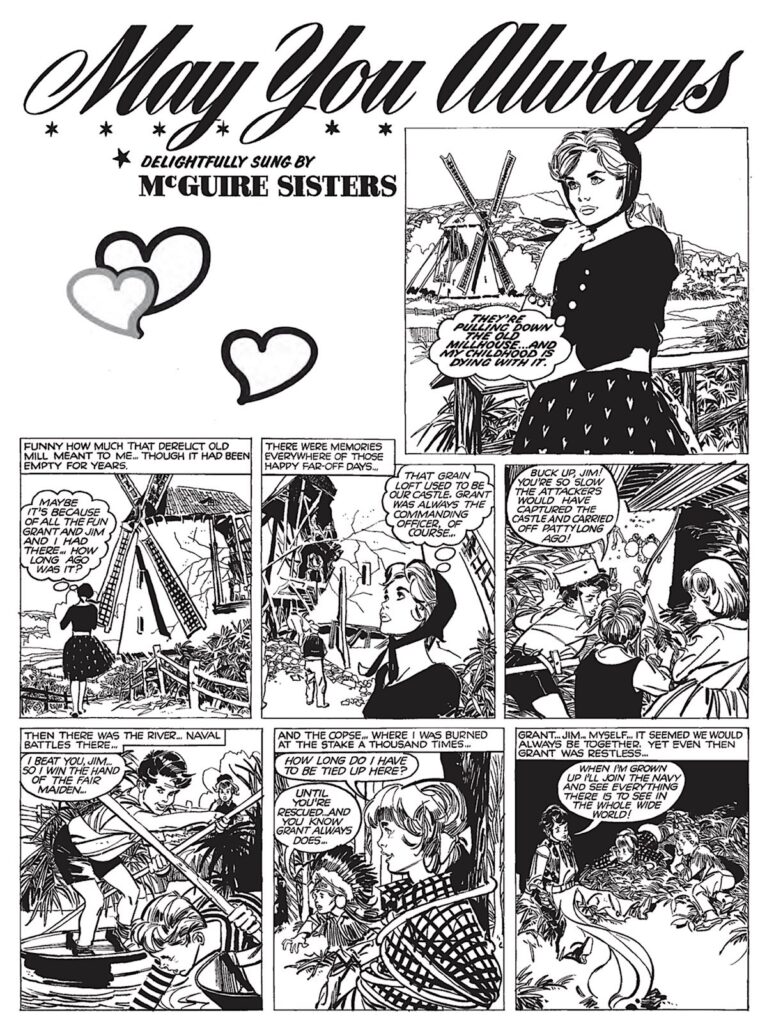
Amidst all this talk of artists, David gave some examples of how this volume of comic material came to be produced in Spain. The art agency S.I. (Selecciones Ilustradas) supplied art from a factory of young, male, artists; perhaps up to 30 of them at a time producing artwork either in their own style, or in the style of the most popular artist of the day. The peseta to sterling exchange rate at this time was such that these 14 to 15 year-olds were earning four or five times what their parents were.
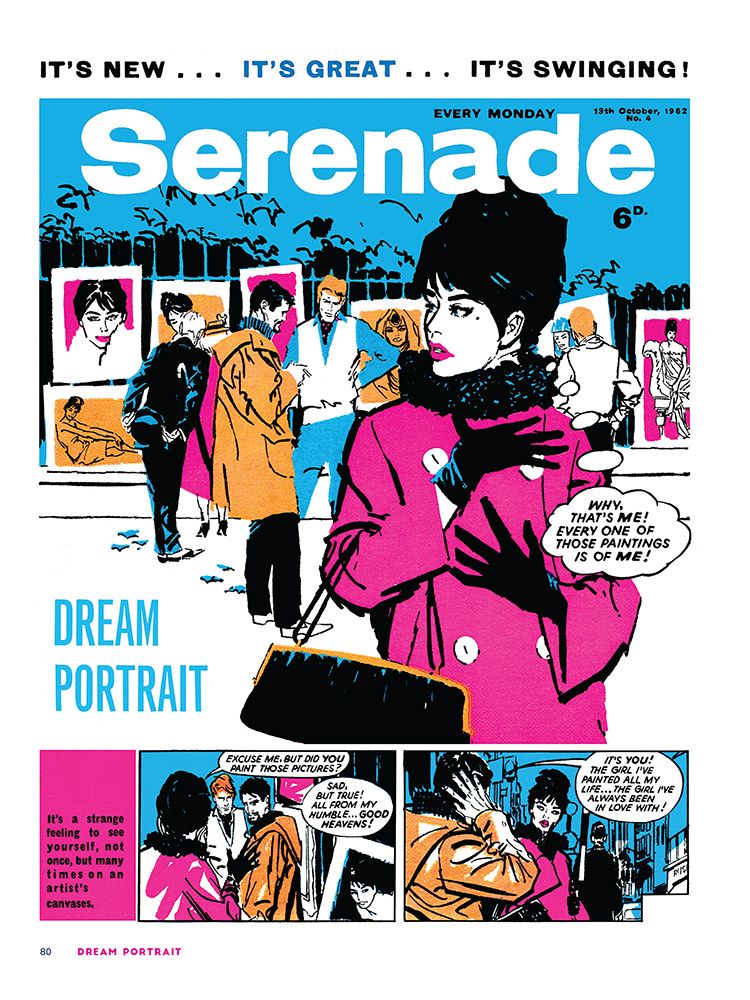
By the mid 1960s, a whole new generation of artists were coming up , including legendary figures such as José Pepe González, best known for his work on the American vampire character, Vampirella. He started work when he was still a teenager and started drawing for British comics in 1960-61, and within a year his was the style that all the other artists at S.I. had been told to copy. A lot of these artists stayed in a single genre, such as romance comics, and you never saw their work in boys comics.
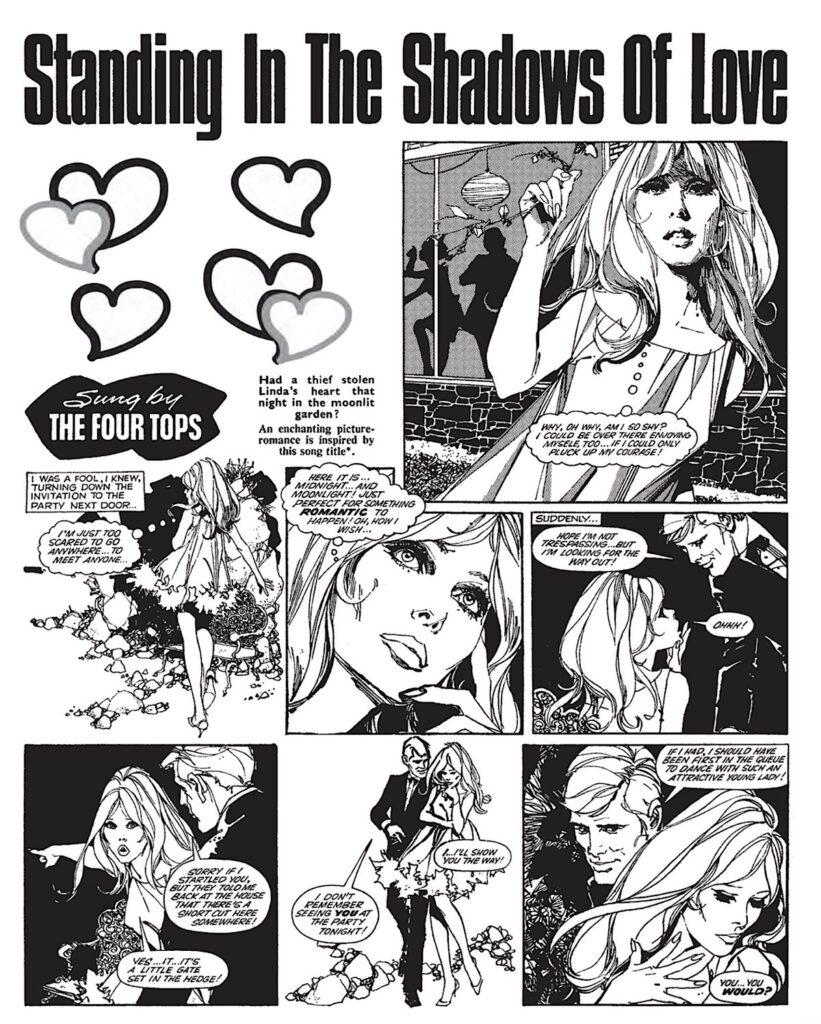
David gave some examples of how Spanish artists liked using photo references for their work and often used photo novella magazines for these references. Those magazines were incredibly popular, but often featured only a small number of models, and this meant that when the comic artists used the magazines for their references, the women they drew in the British romance comics all ended up looking exactly the same!
Over the years a number of Spanish artists left Spain, where there Communist beliefs clashed with the ideology of the Franco regime, and moved to France or England. This included Luis García Mozos, a child prodigy, who started drawing comics professionally when he was just 12 years old and could draw a page of art in an hour – and then spend the rest of the day hanging out with his hippy friends in London.

In 1971 the founder of art agency SI, Josep Toutain, travelled to the United States, to try and find work at Marvel or DC for his artists. Both companies were interested but it was another publisher, Jim Warren, who was really interested. So interested, in fact, that he hired the whole workforce overnight to work on his titles, such Eerie and Creepy. SI’s artists had to stop drawing for romance comics and start drawing horror comics for Jim Warren.
Interestingly, David noted that the artists themselves were very happy about this change, as they felt resentful about only working on romance comics, and wanted to expand into other genres.
The 1970s saw an expansion in titles like Pink, Oh Boy!, and Mates – all of which included comic strips, but were increasingly more focussed on photos of pop stars – with people like Billy Idol and Paul Simon as “hunk of the week”. In the end, Photo Love Monthly would be the last title standing in what had once been a very crowded field indeed.
All in all, this was a great introduction to the history of romance comics in this country. My thanks to David Roach for his talk and the kind people at the Cartoon Museum for hosting it.
Richard Sheaf
• A Very British Affair is available from the Treasury of British Comics web shop and your local book or comic shop | Hardback | 224 Pages ISBN (Slipcase Edition): 139-781786188342 | Standard Version: 978-1786187710
• Order A Very British Affair – Exclusive 2000AD Webshop Standard Edition
• Order A Very British Affair Slipcase Edition here from the 2000AD webshop
• Buy A Very British Affair from AmazonUK (Affiliate Link) | Buy it from your local bookshop via Bookshop.org (Affiliate Link)
Curated by Eisner-nominated historian and artist David Roach, A Very British Affair charts the stratospheric rise of romance comics in postwar Britain with a selection of the greatest romance comics ever printed in the UK. Featuring an eclectic mix of artists from Spain, Italy, and the UK, this collection unearths the sensual art and emotional writing which delighted generations of comics readers.
Featuring over 50 comics stories – many of which have never been reprinted before – this lavish book is a stunning tribute to the often uncredited creators who crafted an industry of love. Roach shines a spotlight on the Spanish and Italian artists who dominated romance, as well as the genre’s forgotten female contributors, like Jenny Butterworth, Pat Tourett and Diane Gabbott. Featuring art by comics icons like Shirley Bellwood (Misty), Jordi Badía Romero (Creepy) and Enrique Badía Romero (AXA), Mike Hubbard (Jane), Carlos Ezquerra (Judge Dredd), John M. Burns (Modesty Blaise), Purita Campos (Patty’s World), Jesus Blaco (Steel Claw), Pepe Gonzalez (Vampirella) Jesus Redondo (Kitty Pryde) and Blas Gallego (Black Beth).
Richard Sheaf is a longtime contributor to downthetubes and has written for numerous magazines about British comics.
Categories: Art and Illustration, British Comics, British Comics - Books, Classic British Comics, Comic Art, Comics, downthetubes Comics News, downthetubes News, Events, Other Worlds
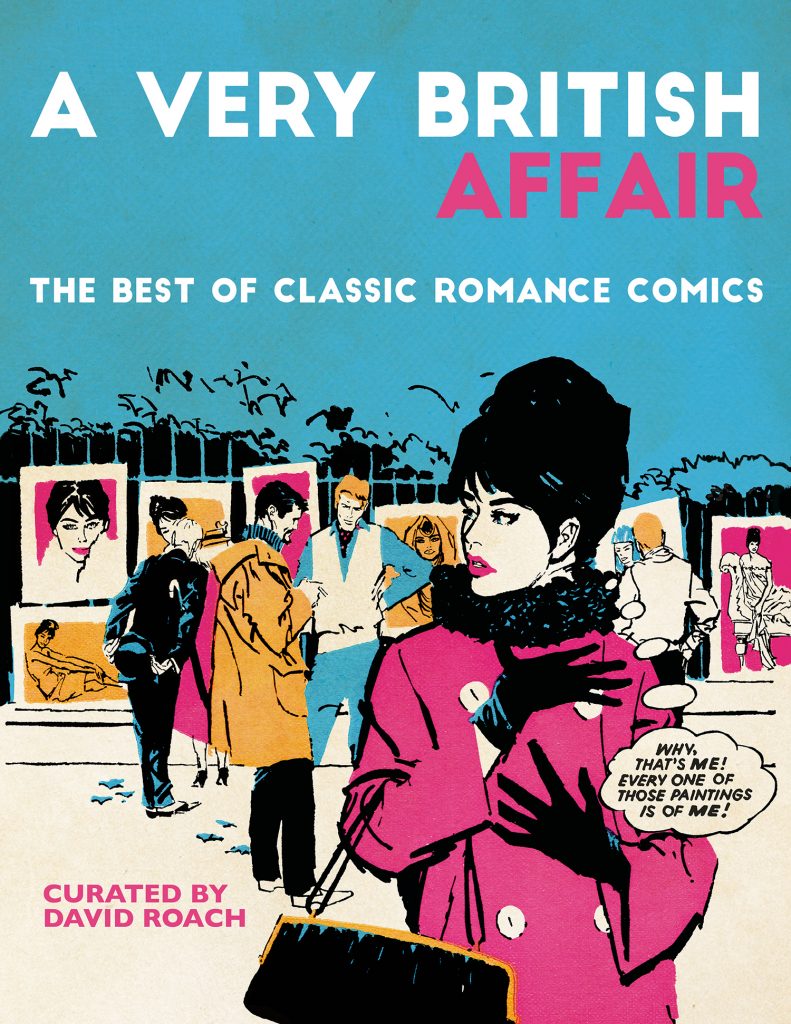
The book looks great. Who did the painting of the girl in bed? Angel Badia Camps?
Yes it is. It’s his cover for Love Story Picture Library No. 1001, published in 1972.